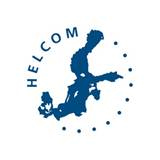
The 2013 HELCOM nutrient reduction scheme is a step towards cost-efficient water protection, suggests a recent study by the University of Helsinki and MTT Agrifood Research Finland. The conclusions state that while there is no need to revise the 2013 targets set for the Baltic Sea catchment, more flexibility for the implementation is required in order to maximise the economic benefits. Furthermore, the cost of reaching the previous nutrient reduction targets, as set in the 2007 Baltic Sea Action Plan, would have been 16% higher although the revised targets are now more ambitious with respect to phosphorus.
By adopting the 2013 HELCOM Ministerial Declaration last October, the HELCOM members committed to revised nutrient reduction targets for each Baltic coastal country to limit their annual inputs below maximum allowable level in specific sub-basins. The report “Prospects for cost-efficient water protection in the Baltic Sea” provides ideas to boost the performance of national implementation programmes of HELCOM countries.
he study demonstrates that there is potential for efficiency gains in load reductions if more flexible mechanisms are put into place, such as joint implementation that could resemble climate change mitigation measures. The cost of meeting the remaining Country Allocated Reduction Targets (CART) – set for waterborne inputs – were roughly estimated to be 1980 million euros (MEUR) annually. According to the report these costs can
· be reduced by over 200 million, from 1980 to 1700 MEUR each year, if the HELCOM countries were allowed to account for load reduction efforts made in other countries,
· be reduced by almost 500 million if the HELCOM states, as already introduced in the 2013 commitment, account for nutrient reductions achieved in other than the focal catchments, and take into account the nutrient exchange between Baltic Sea basins.
The study is a follow-up of the Baltic STERN and was performed during late 2013 – beginning 2014. The analysis is limited to estimating the costs of nutrient reductions made in waterborne inputs – both point and non-point sources in the catchment area – in the coastal countries. Together they account for 85% of the overall phosphorus input and 68% of the overall nitrogen input to the Baltic Sea.


